The car that broke the mould...
As the UK press got to hear about Fiat’s first coupé for a decade, the word filtered out that this was a car to break the mould. Since the late eighties, Fiat’s fortunes had been in decline, compounded by poor sales and after-sales reputation. In spite of European successes with the Panda, Uno and Tipo, durability and residual value remained an issue.
There is no doubting, however, that Fiat had an impressive record in innovation and risk taking. When the Coupé Fiat was first announced in 1993 it would follow such sporting classics as the Fiat 124 coupé, the Spider and the X1/9. Under Fiat boss Paolo Cantarella the brief to the designers was clear: break the mould. The Coupé was a creation of several design minds, chiefly the American Chris Bangle who would subsequently court controversy with his designs for BMW. Originally the Italian design house Pininfarina was given the brief but ended up designing the interior and later assembled the car at their factory in Grugliasco
and tested it at their plant in San Giorgio Canavese, north of Turin,
producing some 80 vehicles a day.
The car’s shell and exterior features were the work of Fiat’s own in-house team Centro Stile under chief designer Nevio de Giusto and another American, Technical Director Peter Davis.
Fiat’s designers purposefully used historical cues to inspire the Coupé. Although the resulting car would often bewilder press and public - sometimes reflecting the terms awe and awful in the same breath - these design touches made the car something special and certainly one that couldn’t be ignored.
The cast-alloy petrol cap paid homage to the car’s heritage and the Fiat corporate sporting values, the round rear lights evocative of a Ferrari. The front snout of the car when viewed from a low angle, also bears relation to a previous Fiat sports, the Dino. The curvaceous polycarbonate headlamps were a deft touch. When Fiat’s design chief was asked how they would be washed he replied 'con amore'. Bangle also supplied the 'eyelash' wheel arch slashes which remained from prototype to production albeit in modified form.
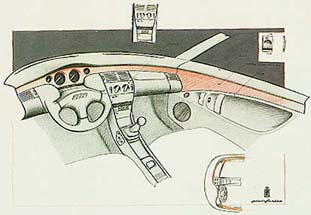 Pininfarina's daring and retro cabin design was implemented in the final version
The Coupé’s cabin, with its centre-stage Pininfarina logo, was gloriously retro with a strip of body colour metal on the dash, circular dials, and - as an option - sumptuous leather seating.
Performance-wise, the Fiat engineers tweaked a basic Tipo platform and the classic Delta Integrale engine, to derive 190 bhp from the 16v Turbo which also had Viscodrive traction control for improved corner handling. The proven Integrale workhorse was replaced in 1996 by a newly designed 2 litre, 5 cylinder engine so that the Turbo version developed 220 bhp and 0-60 in 6.5 seconds. This was the fastest-ever production Fiat.
Successive press writers marvelled at the Coupé, not least its striking looks and superb handling, and in many reviews - pitched against the more established competition such as Hyundai, Honda and Toyota - it came off a resounding winner.
So what happened to it? In spite of great press and healthy sales, (voted 'What Car?' Coupé of the year for two years running) the Coupé Fiat would always ever be a niche
vehicle pitched to a niche market. The car was hand-built at the Pininfarina plant at a rate of 80 per day, with an unofficial total output of 70,000 over a seven year period, half of which were destined for the Italian market. The car was upgraded during its life - including the introduction of a brand new engine and latterly a limited edition version - but production finally ended in June 2000.
Luckily if you own one you are still able to acquire
parts for
repairs. You can find parts for your
Fiat Coupe online and have them
shipped directly to your home.
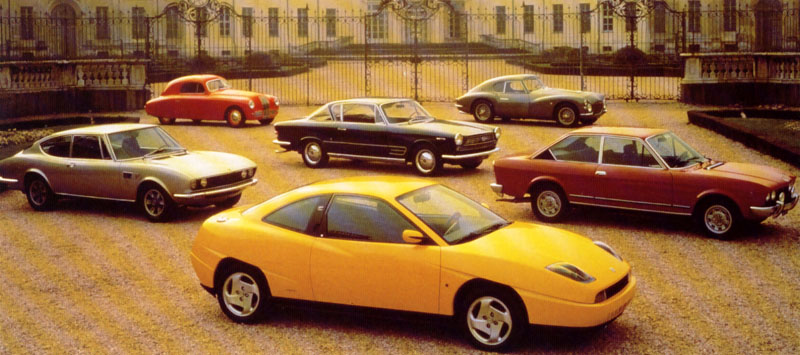
The first sporty Fiat for a decade but following a proud tradition
The Coupé demonstrated what can happen when a company under dynamic leadership and inspired designers is prepared to take risks. It was not a car straight off the CAD system - its concept car-looks defying economic and corporate logic - and for a time it rejuvenated the Fiat marque in the mid-1990s. Some owners removed the rear Fiat badging, so that the only visual clue were the corporate five bars on the bonnet. But this misses the point. The car is proudly Fiat and, for anyone familiar with the maker’s vehicles, upholds the brand characteristics of 'fun, sporty to drive, and bags of Italian brio'. The Coupé, however, for a brief period gave owners the possibility of something else: better build quality, superlative performance, brazen show-car styling and keen pricing.
Rumours of a coupé successor circulated the Internet for a time but in 2003 it appeared that the Alfa Romeo brand now carried the torch for Fiat group sporting values. Fiat’s own development and fortunes hinged on new life for its small car specialism: enter the new Panda
and - in 2007 - the new Fiat 500.
Maybe in the future, just as in 1989-90, a combination of design brilliance and management dynamics will meet again to forge the next, exciting, mould-breaking Coupé Fiat?
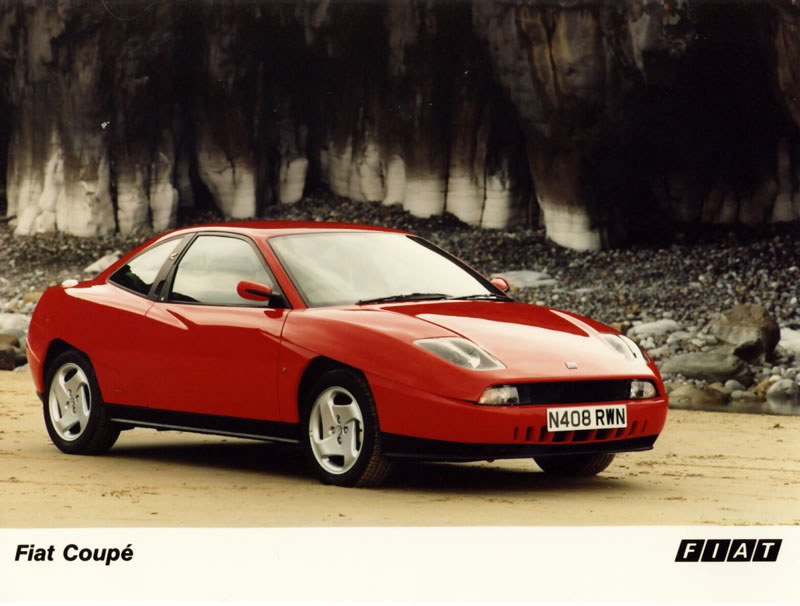
Publicity shot included in UK launch press pack (June 1995)
|
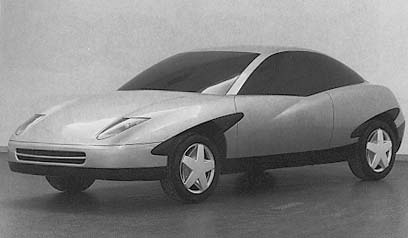
The 1990 prototype had no boot, but dominant wheel arch detail.
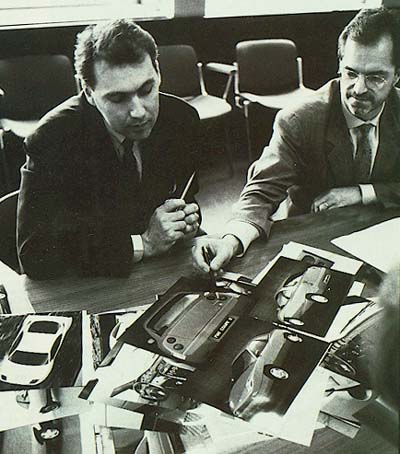
Centro Stile's top designers Nevio di Giusto (right) and Peter Davis
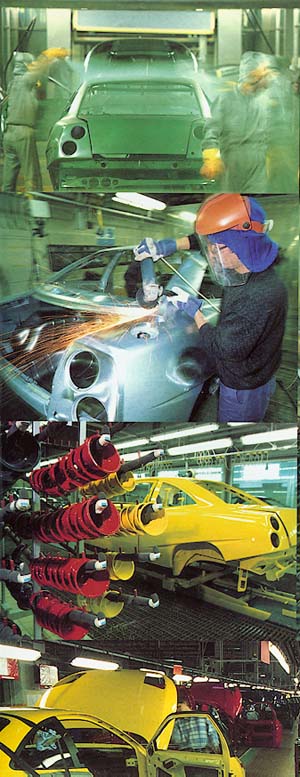
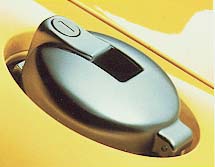
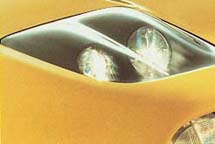
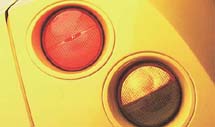
The launch colour was Broom Yellow, joined by Speed Red,
and three metallics, Chamonix Green, Blue and Black.
Air conditioning, sun roof and leather interior were options.
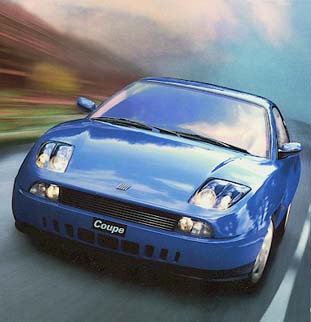
The 2.0 20v coupe sported a high level brake light and new grille
and a range of new colours, including Sprint Blue (on the turbo version only),
and five new metallics: portofino blue, dark red, steel grey, scots green and ink black.
|



